No one likes waking up to itchy bumps or random stings, especially when you have no clue what bit you. Here in the Pacific Northwest, you’ve got your fair share of critters ready to sink their fangs, stingers, or tiny pincers into you. Understanding different bug bites is your ticket to staying itch-free and avoiding nasty reactions.
Ready to play detective? Let’s break down the types of bug bites you’re most likely to encounter.
Bed Bug Bites
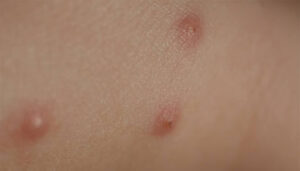
Bed bugs are stealthy little nightmares that feed on your blood while you sleep. They don’t spread disease, but their bites are far from fun. Reactions vary, so while one person might shrug it off, someone else could be left scratching for days.
A bed bug bite may consist of the following:
- A raised, itchy bump with a clear center
- A red, itchy bump with a dark center
- Grouping in a straight line or zigzag pattern
- Burning and itching sensation around the bite marks.
Some bites don’t leave visible marks at all, which makes them easy to miss. But bed bugs always leave other clues. Look for blood spots on your sheets or clothing and rust-colored stains on mattresses or bedding—those are signs of bed bug fecal matter.
Even though they prefer warmer temperatures, bed bugs are a year-round nuisance. Increased travel in the summer just makes things worse. They’re master hitchhikers, latching onto suitcases, clothing, bags, and bedding without anyone noticing.
Stinging Insect Stings
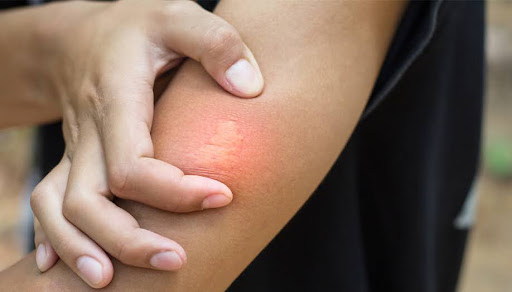
Stinging insects like bees, yellow jackets, hornets, and wasps are some of the most common summertime pests. They’re territorial and ready to defend their nests with painful stings. Yellow jackets and hornets pack a punch with venomous stingers they can use repeatedly, while honey bees only get one shot before their stinger is gone for good.
Here are signs of a stinging insect bite:
- Instant, sharp burning pain at the sting site
- Redness and swelling
- Swelling around the sting area
- Tenderness near the area of the sting
Sting reactions can vary from mild discomfort to severe, life-threatening emergencies. Most people experience normal local reactions, but for some, the symptoms can escalate. The most serious reaction is anaphylaxis, a dangerous allergic response that requires immediate medical attention.
Symptoms of anaphylaxis include:
- Severe swelling to the face, lips, or throat
- Breathing difficulties such as gasping or wheezing
- Nausea or vomiting
- Hives or itching in areas of the body other than the sting site
- Dizziness, lightheadedness, or loss of consciousness
- A sudden drop in blood pressure
To avoid a painful encounter, steer clear of nests and call a licensed professional like Sentinel for safe, effective removal. A trained technician can eliminate the problem without putting you at risk.
Mosquito Bites
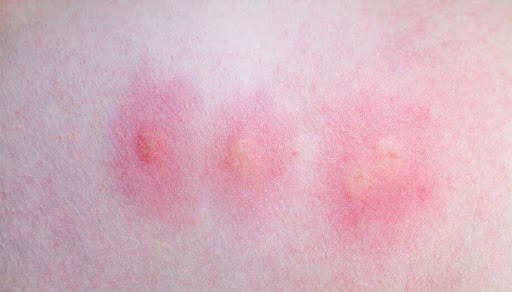
Mosquito bites are more than just a mild annoyance. When a mosquito pierces your skin to feed, it injects saliva loaded with proteins that trigger your immune system. The result? Itchy, red bumps that can drive you crazy.
And here’s a fun fact: only female mosquitoes bite. They need blood to produce eggs, and their specialized mouthparts are built for the job.
Mosquito bites can show in a few different ways, including:
- A puffy white and reddish bump
- A hard-itchy red bump, or even multiple bumps
- A hard blister instead of a bump
Mosquitoes are most active during spring and summer, especially around dusk and dawn. Children are more likely to experience severe reactions like swollen lymph nodes, hives, or low-grade fevers. Adults may become somewhat desensitized over time, but kids can end up with larger, more irritated bite marks.
The best way to protect yourself against mosquitoes and the potential diseases they carry is to take the following steps:
- Use insect repellent when you are outdoors
- Wear a long-sleeve shirt, pants, and a hat when going into areas where mosquitoes are high in numbers, such as the woods or wetlands
- Make sure windows and doors are sealed properly, and are screened when open
- Eliminate standing water near your home in places such as clogged gutters, around leaking outdoor faucets and sprinklers, and old tires
Want a mosquito-free yard? Prevention is your best bet. And when you need extra help, give Sentinel a call for expert mosquito control!
Flea Bites
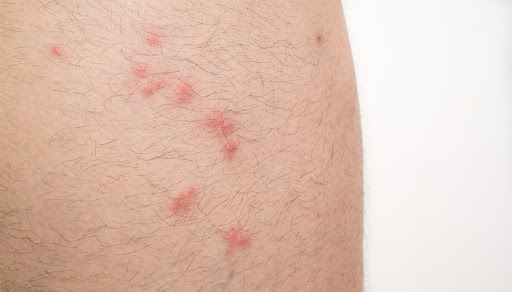
These blood-sucking parasites latch onto humans and pets alike, leaving behind irritated, swollen bites. Adult fleas are wingless but have an incredible jump, leaping up to one hundred times their body length. This impressive skill lets them travel far and wide, hopping from pets to carpets to your skin.
Only adult fleas feed on blood. The larvae, meanwhile, stick to feasting on debris, dust, and lint found in carpets and upholstery. Fleas can carry disease as well, like cat-scratch disease (CSD) and, in rare cases, bubonic plague.
Here are some signs of flea bites:
- Red, swollen, intense itching and sometimes painful bumps
- Bite marks that appear in clusters, often around the legs or ankles
- Possible bacterial infection from prolonged scratching
Keeping fleas out of your home takes a little effort but makes a big difference. Here’s how to protect your home from a full-blown flea infestation:
- Keep up regular maintenance of your yard, like keeping the grass mowed and any vegetation cut back
- If you own pets, make sure to keep up their regular flea protection regime
- Keep your home clean and vacuum at least once a week, as the larvae feed on debris, dust, and lint in carpeting
Flea bites are irritating, but a little prevention goes a long way.
Spider Bites
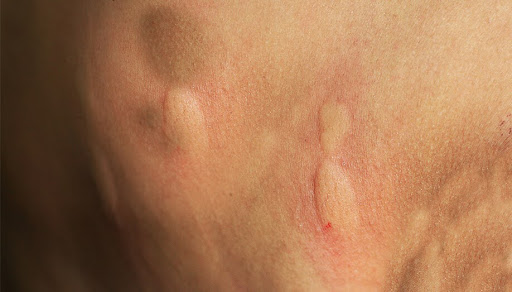
The Pacific Northwest is home to many different species of spiders, but only a handful have fangs strong enough to pierce human skin. In this region, the most concerning species include the black widow spider and the yellow sac spider. Although these spiders are usually not aggressive, they can bite if they feel trapped or accidentally disturbed.
Here’s what you can expect from a spider bite:
- Itching or rash forming at the location of the bite
- Pain at the location of the bite
- Redness, blisters or bumps
- Look and feel similar to a bee sting
A severe reaction to a spider bite (like the black widow’s) can include:
- Muscle pain or cramping
- Sweating
- Difficulty breathing
- High blood pressure
- Fever
- Headache
The best way to prevent a spider infestation in your home is by following these tips:
- Remove any spider webs that you find in your shed or garage
- Keep any woodpiles outside, and check them for spiders before bringing them inside your home
- Wear long-sleeved shirts and pants when you are accessing any wooded areas or clearing out any areas with potential spider activity
- Remove any clutter from around or inside the home
- Eliminate small cracks and openings to your home with a sealant
- Make sure all doors and windows are snug fitting
- If a spider is on you, brush it away and don’t crush it to decrease the chance of its fangs piercing your skin
- Have your home treated regularly by a pest professional
We hope this information helps you to avoid bites or stings from the common pests we see here in the Pacific Northwest. If you’re noticing an abundance of these pests, give Sentinel a call for a free inspection!

